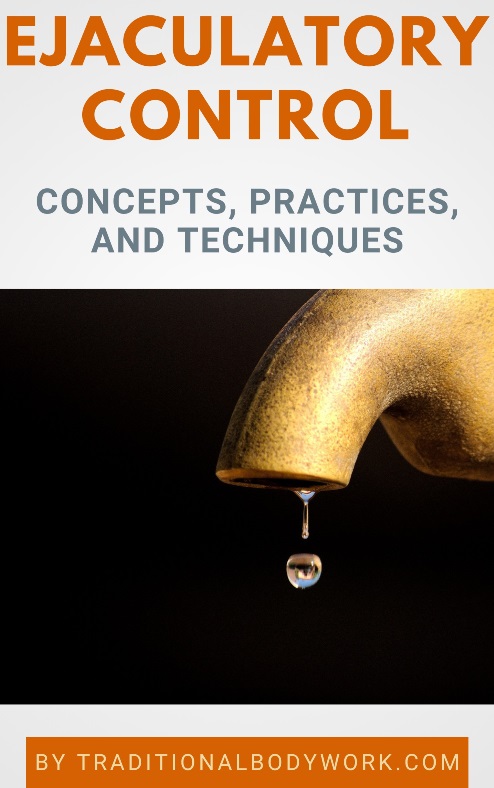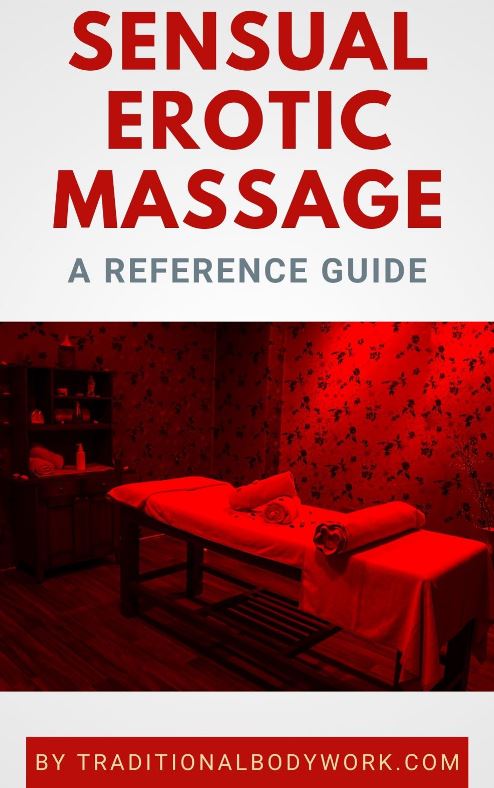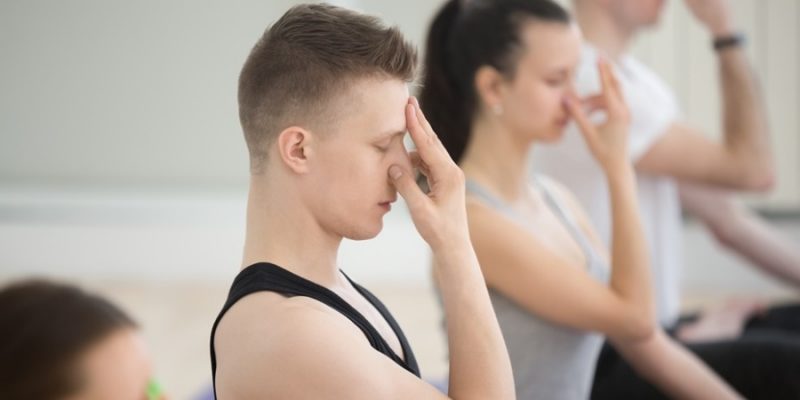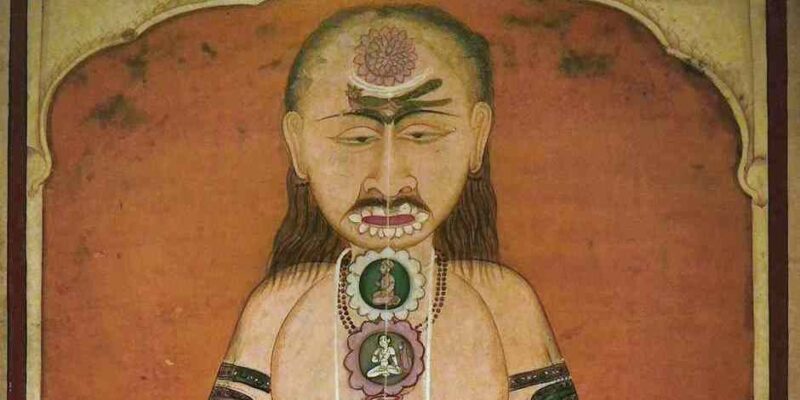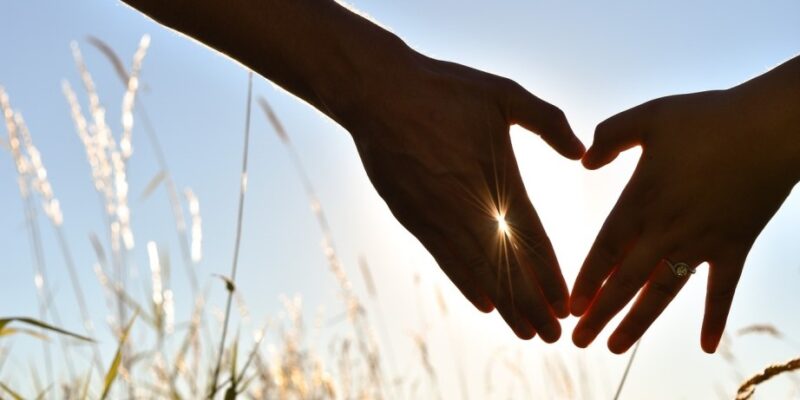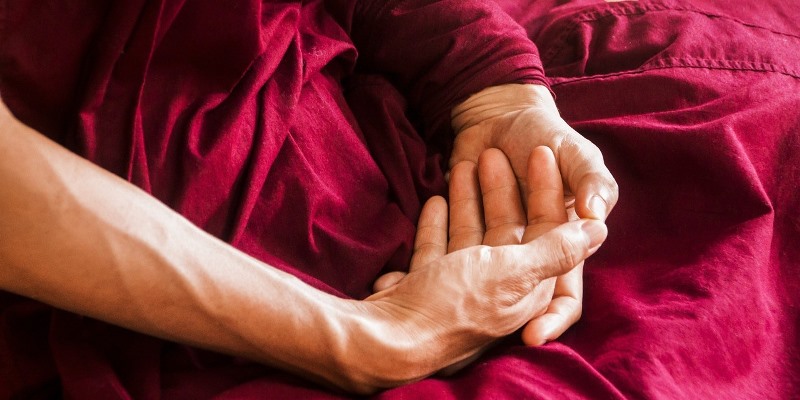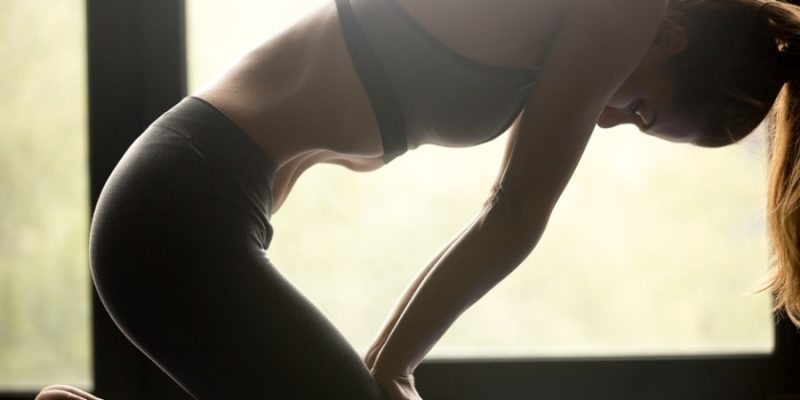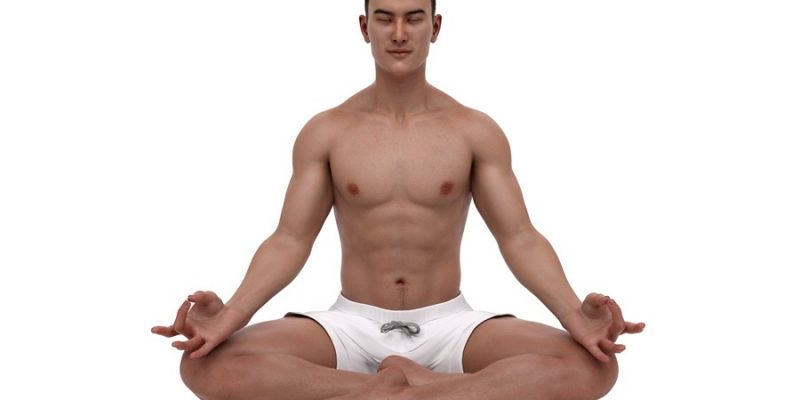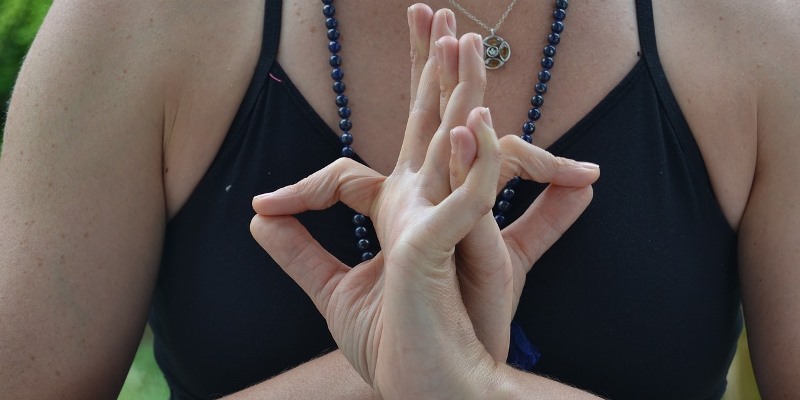
Although Bandhas and Mudras are often mentioned as distinct practices, a Bandha is actually a type of Mudra.
Mudras

So, let’s start with Mudras. A certain Mudra (there are many) is a Yogic gesture or pose, and it can be done with the entire body although it’s often done with the hands and fingers (see the lead image of this post).
Mudras can have different meanings and different functions. For instance, a Mudra can have a symbolic, ritual or spiritual meaning in Hinduism, Jainism or Buddhism. They can also be used in traditional dance, or for physical, mental and spiritual health benefits in Yoga practices.
In Yoga, they are often done together with Pranayama to (therapeutically) work on different parts of the body, or to stimulate or direct the flow of Prana (Life Energy) or other energies. In fact, it’s thought that a whole range of discomforts and illnesses can be treated with Mudras.
Bandhas
Bandhas (a type of Mudra) are so-called “muscle locks” and have as their aims to lock or keep Prana in very particular areas of the body and then, after release, channel that energy flow with increased pressure through the body.
Another aim of using Bandhas is to block i.e. close certain Nadis and reroute Prana to other Nadis, Chakras, or certain gross body parts. Of course, this is likewise done for health reasons or alternatively for a better meditation practice and spiritual uplifting.
For an example of a Mudra and a Bandha, read our posts Yoni Mudra Explained and Mula Bandha – Pranic Yoga Muscle Lock.



